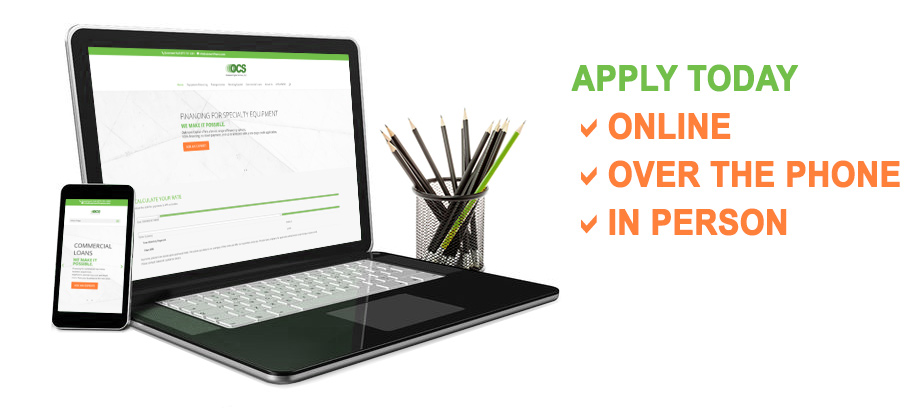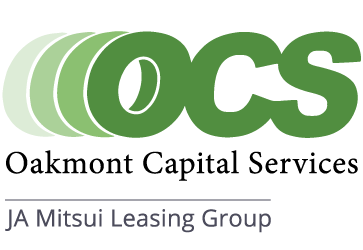THIS OR THAT: UNDERSTANDING THE AVAILABLE OPTIONS WHEN CONSIDERING EQUIPMENT FINANCING
Picture this: you’re a small business owner, and you’re in the market for financing to purchase a piece of equipment. Maybe you just landed a big job, or one of your machines has had one too many repairs. However, when you start Googling the terms “equipment finance” or “business loans,” you find yourself overwhelmed with the options, and the terminology seems unclear. You begin to wonder:
- Is a loan or lease structure better for my financing needs?
- What’s the difference between an interest rate and APR?
- Should I focus on consumer or commercial lending?
You are not alone. Many business owners require help with these questions, and Oakmont Capital Services is here to assist!
Is a loan or lease structure better for my financing needs?
Let’s start with the basics. In the simplest terms, an equipment loan means borrowing money from a financial institution, like a bank or an independent lender and paying it back monthly (including interest). If the loan has been paid in full at the end of the term (typically 60 months), you own the equipment.
On the other hand, a lease structure is when you enter into an agreement with a financial institution to pay a monthly fee to utilize a piece of equipment. However, at the end of the contract, a business does not own the equipment. It might be given the option to purchase it, though.
A loan and a lease both have fixed monthly payments – but that’s where the similarities end. One of the key differences is how the finance charges are allocated for both. In a loan agreement, the interest is amortized (or lowered) during the agreed term, whereas in a lease, the charges are fixed on every payment.
There are benefits to both options, depending on the nature of your business.
Loan Benefits:
- You own the equipment once the loan is paid in full.
- There are some great tax benefits to owning equipment.
- Financing equipment frees up cash flow for other business expenses.
- Oakmont Capital Services reports all loans to the credit bureaus, helping customers build business credit.
Lease Benefits:
- If you’ve selected a piece of equipment that may depreciate, such as a pick-up truck, this might be a good solution for your business.
- Leasing can also provide flexibility for companies working with capital vs operating budget constraints.
- Some leases limit the term commitment to a short period of time. This allows a business to tie the expense to the cash flow of a specific contract if they wish.
- At the end of your lease, you’re often given the option to either A.) buy the equipment or B.) renew your lease for another term.
Only you (and your accountant) know the best option for your business at any point in time. Depending on the type of business you own, you may wind up with a mix of owned and leased equipment.
What’s the difference between an interest rate and APR?
Whether buying or leasing, this terminology is important to understand before entering into a financial agreement. Although both are related, their difference lies in how each is calculated, impacting a loan or lease deal.
An interest rate refers to the annual cost of a loan to a borrower and is expressed as a percentage. The rate can be variable or fixed, but it’s always a percentage. For example, if you take out a $55,000 loan with a 6% fixed interest rate, your annual interest payments would be $3,300.
An annual percentage rate, or APR, is also the yearly cost of a loan to a borrower; however, it includes the fees incurred to obtain that loan. These fees can include closing costs, insurance, rebates, and other expenses. It’s important to remember: the APR includes the interest on the loan.
Let’s take the same example from above but calculate APR: $55,000 loan with $6,000 in annual fees.
- To figure out the APR, you first add the loan amount ($55,000) plus the fees ($6,000), which equals $61,000.
- Then, use the 6% interest rate to calculate the annual payment ($61,000 x .06) which totals $3,660.
- To find the APR, take the annual payment ($3,660) divided by the original loan amount ($55,000), giving you 6.65%.
You’ll receive both the interest rate and APR when applying for a loan. Look closely at these two numbers and ask your financing professional any questions to make sure you understand the payments and terms.
Should I pursue consumer or commercial lending?
Along with deciding between a loan and a lease and recognizing the difference between interest rate and APR, it’s also imperative to understand consumer vs. commercial lending for a small business.
The eligibility for a loan depends on whether you apply as a business (a.k.a. commercial) or as an individual. If you’re purchasing a piece of equipment or a vehicle for personal use, a consumer loan is the way to go. However, if you’re buying a piece of equipment for your business – a woodchipper, skid steer, backhoe, aerial lift, etc. – you’ll want to make sure you apply for a commercial loan.
There are other differences between consumer and commercial lending as well, like:
- Consumer loans require a more extensive application process than a commercial or business loan. At Oakmont Capital Services, you can get started on a commercial loan with a quick, one-page application.
- Consumer loans fall under and are reported as personal credit, whereas commercial loans are reported as business credit, helping you build your business’ credit history to make it easier to apply for loans in the future.
- Taking out commercial loans frees up your personal credit for purchases like a home, vehicle, tuition expenses, and more.
The bottom line is that personal loans should be separate from business loans. Building business credit is a critical financial growth measure, and commercial loans can positively impact a small business.
Hopefully, this overview has helped clarify some financing options and terminology. If you have further questions regarding loans vs. leases, commercial vs. consumer loans, or to discuss whether Oakmont Capital Services is the right finance partner for you, contact one of our dedicated professionals today at ocs@oakmontfinance.com or 877-701-2391.
WHY CHOOSE US?
Better Rates and Flexible Terms
Oakmont Capital shatters the big bank rates, making us the go-to funding source for a wide range of customers.
Over 20 Years of Experience
Work with our team of experts and grow your business. Speak with our Certified Lease & Finance Professionals today to learn more.
24 Hour Turnaround
Our streamlined application process delivers credit decisions within hours, not days, maximizing your time and experience.

